Goethe once asserted that “architecture is frozen music.” Normally, we perceive this quote as a beautiful metaphor. However, some architects really draw on from the amazing texture of ice cubes, simultaneously fragile and solid, transparent and opaque, to design breathtaking buildings that look as if they could easily fit into the world of the Ice Queen.


Kežmarská chata by Atelier 8000
Czech studio Atelier 8000 participated in the international architectural competition for a new Kežmarská chata (the Kežmarská Hut) in Slovakia’s High Tatras. The architects designed a sustainable mountain hut that comprises a succinct shape of a simple cuboid, which due to its angled position in the landscape evokes an erratic block left behind by the retreating glacier and fits perfectly into its surroundings. The sharp edges of the building seem to the merge into the context of the surrounding mountain peaks, while its position induces a feeling of lightness and randomness.


Kežmarská chata by Atelier 8000
The cubic retreat is built with larch-wood laminated timber beams and clad in a combination of glass, aluminium and photovoltaic panels. The highly reflective surfaces endow the structure with a touch of glimmer resembling the glints and reflections which can be observed on the surface of a mountain lake or on thawing ice. Three sides of the facade are visible from any viewing point, which amplifies the play of light and shadows. All this makes the hut look like a large ice cube.



Kežmarská chata by Atelier 8000
The base of the hut accommodates a snowmobile garage, a staff entrance, ski storage, a drying room and a restroom. Common areas such as the restaurant and deck are located on the ground floor, while the upper floors house sleeping and emergency recovery areas. Inside, the rooms have slanted ceilings and unusual angles defined by the exterior design of the building. The shape and orientation of the hut maximize solar energy generation.

Xinxiang Cultural Tourism Center by Qiang Zou and Mathieu Forest
Designed by Qiang Zou and Mathieu Forest, the Xinxiang Cultural Tourism Center does not look like a regular building at all. Its pure and monumental volume rather evokes an ice sculpture out of scale. The ambition of the project is to become the architectural icon of the new tourism district, which will be dedicated to winter sports.
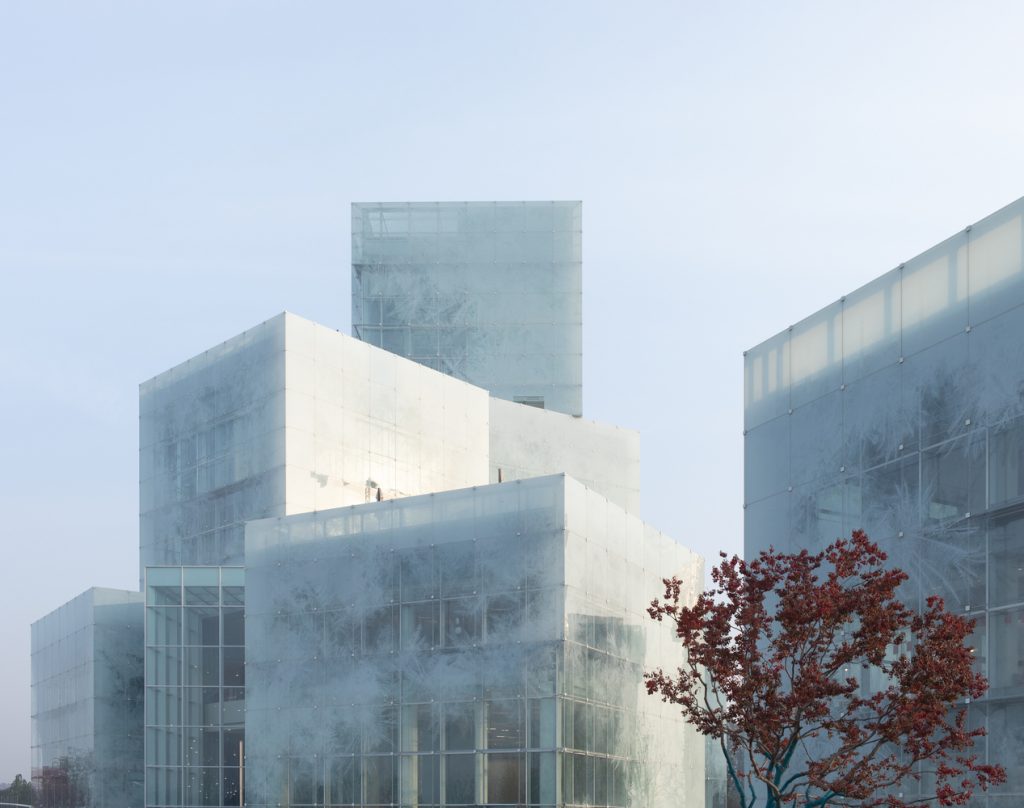

Xinxiang Cultural Tourism Center by Qiang Zou and Mathieu Forest
The design comprises nine ice cubes superposed and offset from each other. The structure looks simple at a distance and becomes subtle and complex as one approaches. The texture of the glass facades is composed of a multitude of tangled translucent ice crystals that filter the light and provoke a sense of fragility and mystery. The building thus seems to emit the light it receives like a mass of inhabited ice.


Xinxiang Cultural Tourism Center by Qiang Zou and Mathieu Forest
The whole volume is constructed exclusively of printed glass and steel, with glass panels of the facades suspended by stainless steel cables and minimal steel connections. No supporting structure is visible for the observer.
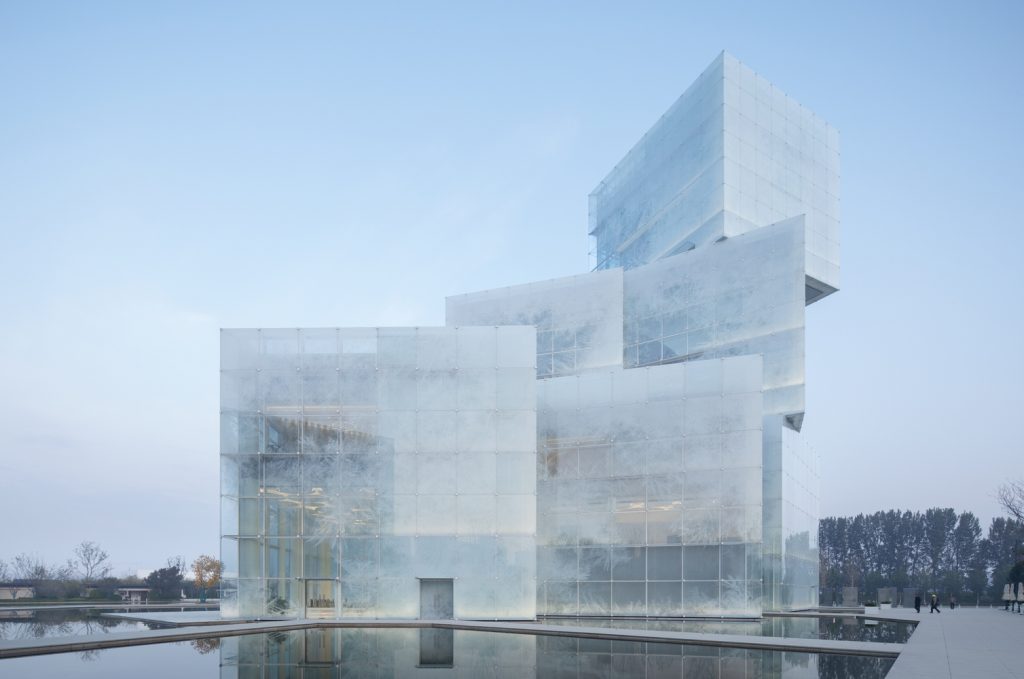

Xinxiang Cultural Tourism Center by Qiang Zou and Mathieu Forest
The building is never perceived in the same way when observed from different viewpoints and continually changes its appearance depending on the time of the day, season and weather. On top of that, the ice-like façade reflects both the sun and the clouds, which become visible on the texture of frost. At night, the facades are fully illuminated and light up the surroundings, radiating a uniform glow that irresistibly catches the eye and prevents a direct view of the interior life.

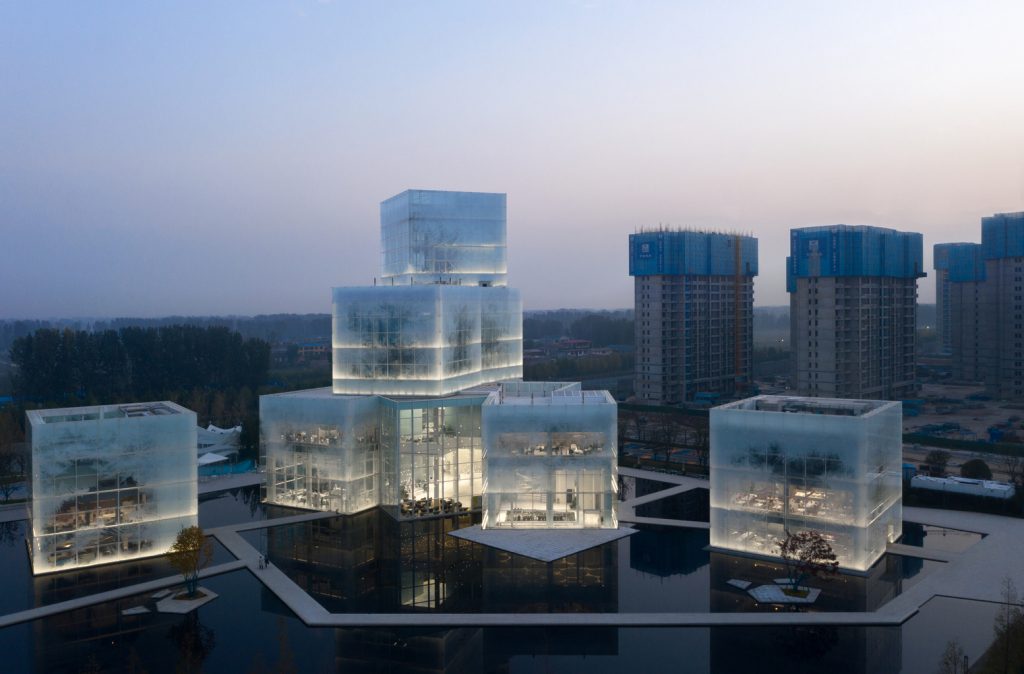
Xinxiang Cultural Tourism Center by Qiang Zou and Mathieu Forest
A metaphoric work of ice cubes seems to be transformed into a liquid state because of the presence of water and the lake, on which the building seems to float. This continuity creates a pleasant and serene environment.

Chulalongkorn Architecture Library by Department of Architecture
Bangkok-based architecture studio Department of Architecture has brought ice inside. Its Chulalongkorn Architecture Library, a 1,260 sqm library in the Chulalongkorn University in Bangkok, Thailand features ice cube-like reading modules among other unusual features intended to activate the act of learning in a different way.
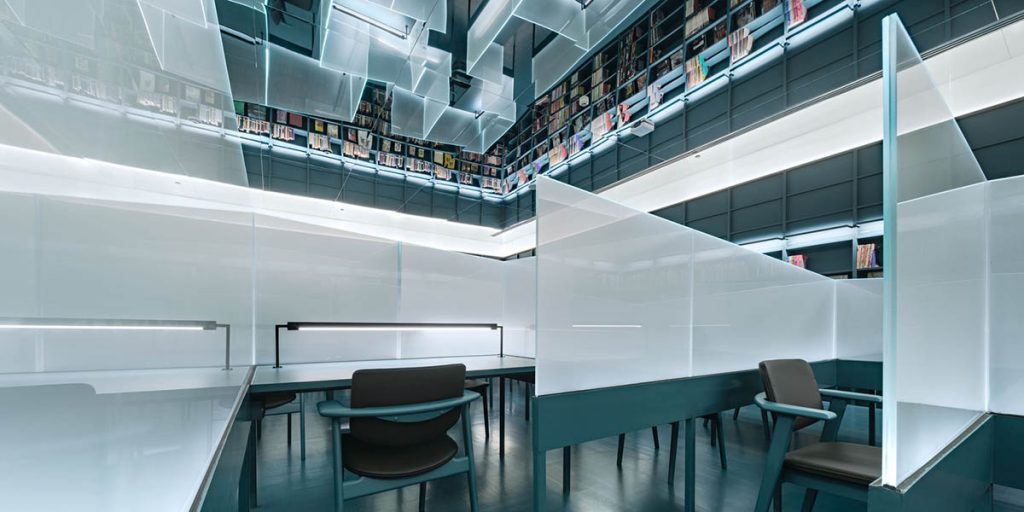
Chulalongkorn Architecture Library by Department of Architecture
The project is the studio’s attempt to reinterpret learning spaces in libraries – and in particular, a learning space for architecture students – by adapting them to the realities of the digital age. To re-activate the library, the architects have expanded the meaning of the architecture library to be more than a place for reading books, but to become ‘a creative incubator’ for students.
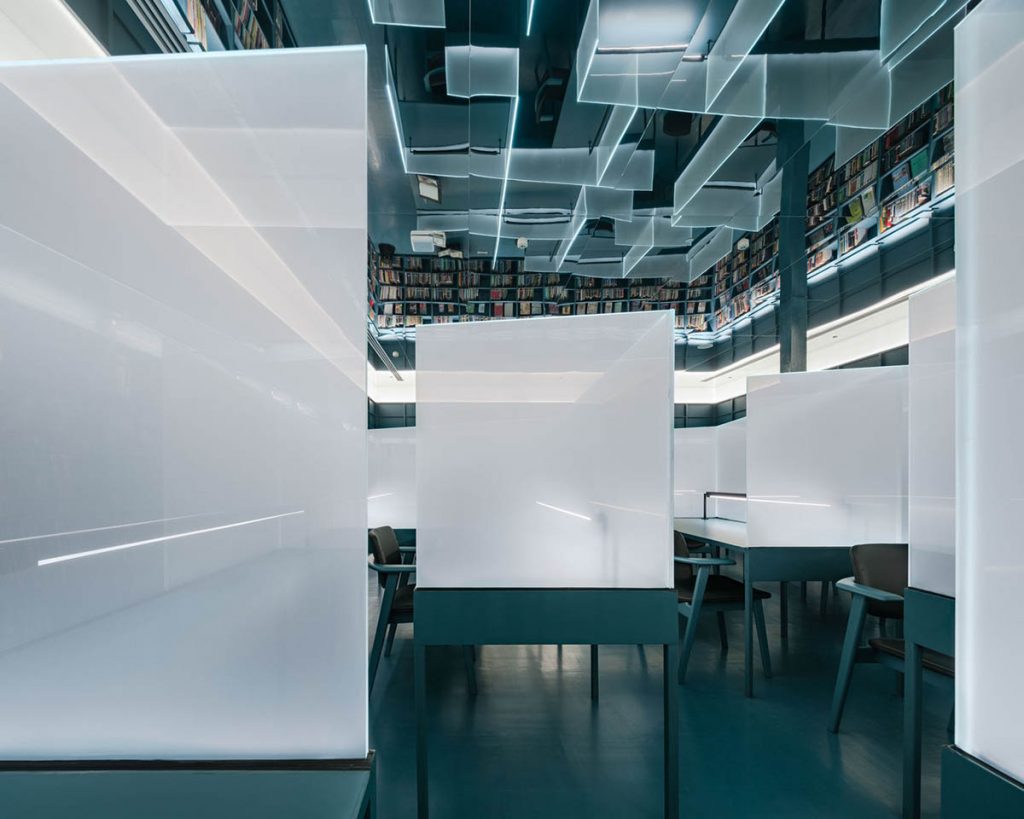
Chulalongkorn Architecture Library by Department of Architecture
The library includes not only physical books but also digital media, movies, exhibition. The studio integrated various programs into the new library. They range from a co-working space, an exhibition space, pin-up spaces with magnetic pin boards and digital screen to an occasional lecture space where the library becomes a place for the exchange of ideas.
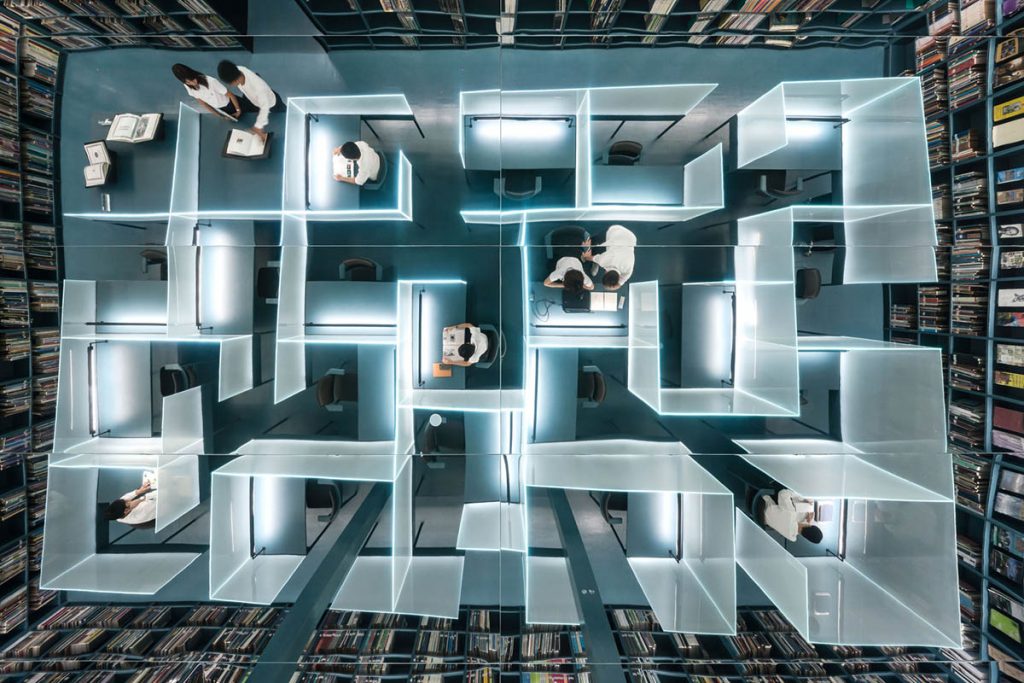
Chulalongkorn Architecture Library by Department of Architecture
The area filled with ice-like partitions is conceived as a quiet zone for those who need to concentrate. Carrels are rearranged in a labyrinth configuration to minimize disturbance from the circulation around. The reflective ceiling reveals the plan of the luminous maze.